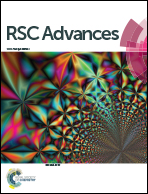Assessment of the LFAs-PBE exchange–correlation potential for high-order harmonic generation of aligned H2+ molecules
Abstract
We examine the performance of our recently developed LFAs-PBE exchange-correlation (XC) potential [C.-R. Pan, P.-T. Fang, and J.-D. Chai, Phys. Rev. A, 2013, 87, 052510] for the high-order harmonic generation (HHG) spectra and related properties of H2+ molecules aligned parallel and perpendicular to the polarization of an intense linearly polarized laser pulse, employing the real-time formulation of time-dependent density functional theory (RT-TDDFT). The results are compared with the exact solutions of the time-dependent Schrödinger equation as well as those obtained with other XC potentials in RT-TDDFT. Owing to its correct (−1/r) asymptote, the LFAs-PBE potential significantly outperforms conventional XC potentials for the HHG spectra and the properties that are sensitive to the XC potential asymptote. Accordingly, the LFAs-PBE potential, which has a computational cost similar to that of the popular Perdew–Burke–Ernzerhof (PBE) potential, can be very promising for the study of the ground-state, excited-state, and time-dependent properties of large electronic systems, extending the applicability of density functional methods for a diverse range of applications.



 Please wait while we load your content...
Please wait while we load your content...